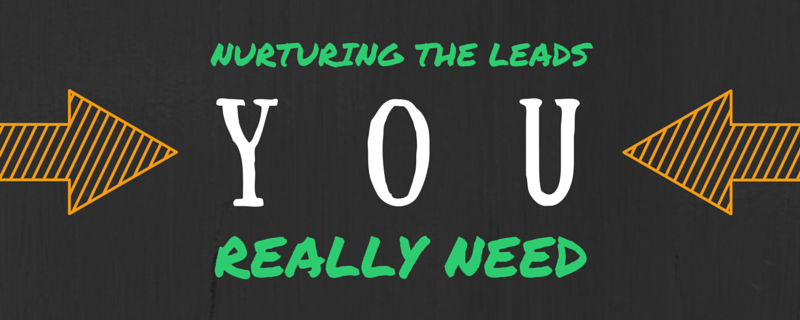BLOG
5 Signs of a Quality Lead
When getting leads into your sales funnel, it is often difficult to determine who is ready to buy and who isn’t. Different actions and interactions with your brand can have different implications on whether a prospect is interested in your product offering.
So when you do get a lead, how do you know if it’s worth pursuing or if they will just drop off? Here are the five signs of a quality lead.
1. Provided contact information

Your contact information or sign-up forms can do more than just collect email addresses. They also help you see what is a quality lead and what is not.
One of the ways you can tell the interested customers from the flukes is by making some questions on your sign-up forms optional. The people who are genuinely interested in your product and service will go ahead and tell you just a bit more about themselves, such as the timeframe they’re likely to purchase in. Those who are not so interested or had to sign up in order to view certain content will probably not take the time to answer these questions. You can still focus on these leads, but not as much as the others.
2. Intent – Whether they make the first contact

When analysing a lead, look at who made the first contact. Did the customer fill out an email sign-up form or did they fill out an information request form at an event? These are the types of leads you want to follow up with soon. The customer knows what he or she wants and they already know you can deliver. Now you just have to show them why they need you and not your competition.
Within a day (or two if they contacted you at an event), reach out to this customer and provide him or her with more information. Invite this person to call you personally or visit your site for more information about a product or service that this person showed interest in.
That’s not to say that someone you contacted first isn’t a good lead. Maybe they are truly interested. While these leads are often worth following up with, you already know that someone who contacts you first is already interested and looking to buy or sign a contract.
3. Timeliness of the contact

When a person contacts you, the time of the year might give you an idea about what they need and why.
For many marketers, the weakest leads often come at the beginning of the year. People make resolutions, but they do not always keep them. They express interest in many different products and services with no real intention of actually following through. This is common for most marketers. While it is a good idea to give your sales team plenty of leads, these leads might not always be so strong. Still, you have to start somewhere, right?
Use the timing of the lead to help determine what type of marketing and attention a lead gets. Set up automated emails to potential customers who only vaguely expressed interest. They could turn into a sale later in the year so it is a good idea to keep in contact. If they really aren’t interested, they will probably opt out of your emails, and then you won’t have to worry about them at all.
4. Demographic – Whether it matches what you’re looking for

When a prospective customer fills out an email sign-up sheet, there should be just one or two questions that will help you narrow down and define this person’s demographic. Once you have the demographic, you can better assess why this person wanted to sign up and how you could better lead them to the sales funnel.
First define your intended demographic. Maybe you’re looking for parents, business professionals or teenagers, and of course, you can have multiple demographics, so long as you don’t list it as ‘everyone.’ Not everyone needs or wants your product or service, so do not follow leads from people outside of your target demographic (or at least don’t prioritise them).
Once you have it defined, try to incorporate one or two questions to narrow down your prospective lead’s demographic on any sign-up forms. If you run a property development, you might pose a question such as “I plan on moving in within the next six months.” In the blank, have a drop-down menu where users can select an answer. Now you can create ads to fit those needs and not focus on people who may not need your services soon.
5. Behaviour – Online Body Language

From website visits to email opens, online body language gives you great insight into which leads are ready to buy. Visits to high intent pages such as Contact Us and clicking on specific FAQs makes it easy to determine how hot your lead is and whether you should keep nurturing them, or get in contact.
Using the lead’s email address, try to find them on Facebook or other social media sites (Facebook’s Custom Audience tool might help you here). Did they like your Facebook page or interact with your accounts on other social media sites? If so, these leads are probably worth pursing in earnest.
Quality leads come in all shapes and sizes, and when you’re monitoring a huge amount of leads, it is sometimes difficult to see who is most likely to close. Look for signs from those leads that contact you first and engage with your company online. This will give you a far better idea of who’s ready to buy.











